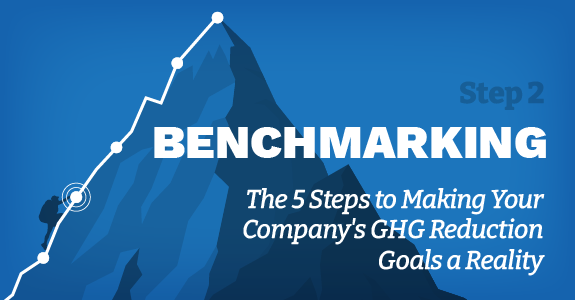
Step 2: The Journey to ESG – and four organizations who can help along the way
Frameworks and standards for sustainability and reporting.
June 8, 2022
By: Melissa Dakas, Mariah Gehle, & Tommy Sweat
THE SECOND IN A FIVE-STEP BLOG SERIES
As our colleagues Mark and Scott mentioned in the previous step, measuring, demonstrating, and disclosing your organization’s environmental impact isn’t just possible, it’s achievable. It may seem like a daunting prospect, but there are resources and organizations that can provide some guidance and processes to help you work toward your organizational vision of ESG. Reporting transparent and reliable greenhouse gas (GHG) data has become a stakeholder expectation. Reporting has also become a fundamental part of effective business management to identify a company’s operational performance and resilience to sustainability risks relevant to your business.
There are quite a few existing frameworks, standards, and platforms for organizing environmental data and benchmarking performance. Many are specific to types of industries, different geographies, and types of operations and assets. With a goal of fully transparent measurement and complete disclosure of performance, several groups have worked together or in parallel to set the standards for sustainability reporting that encompass business growth/vision, and they work hand in hand with environmental reporting. A carbon inventory framework such as the Carbon Disclosure Project (CDP) provides a simplistic methodology for reporting, but on its own provides minimal insight into opportunities for direct decarbonization and the identification of risk. In contrast, reporting with the Science Based Target Initiative (SBTi) in conjunction with CDP will provide an emissions inventory and a clearly defined pathway for companies to reduce their impacts and mitigate climate change risks.
Of the many GHG reporting frameworks used by organizations, here are a few that are frequently used by organizations that we partner with.
Popular ESG Frameworks
The Carbon Disclosure Project (CDP):
Widely regarded by investors as the leading climate research provider, CDP is a non-profit organization based in the UK, Japan, India, China, Germany, and the United States with a mission to drive companies and governments to reduce GHG emissions and protect water and other natural resources, while assisting companies and cities to disclose their environmental impact. It aims to make environmental reporting and risk management a business norm, driving disclosure, insight, and transparent action. Nearly 8,400 companies with 50% of global market capitalization have publicly disclosed environmental information through CDP.
Global Reporting Initiative (GRI):
GRI is an independent international organization that provides companies with a global common language for communicating environmental impact. This is done via the world’s most widely used standards for sustainability reporting: the GRI Standards. GRI covers topics like human rights, labor, biodiversity, energy use, and reduction, and it helps organizations to assess materiality based on impacts made by issuers on the economy, environment, and society. Headquartered in Amsterdam, GRI has seven regional offices worldwide and works closely with businesses, investors, policymakers, civil society, labor organizations, and other experts to develop GRI Standards and promote their use worldwide.
Science Based Targets Initiative (SBTi):
SBTi provides companies with a clearly defined path to reduce emissions in accordance with the Paris Agreement goals and science-based targets. These targets provide a clear pathway for companies to reduce GHG emissions, with the goal of helping prevent the worst impacts of climate change and future-proof business growth. SBTi has developed and is developing sector-specific guidance to assist companies in the target-setting process.
Oil and Gas Methane Partnership (OGMP):
The OGMP is an industry-specific example of a multi-stakeholder initiative launched by the United Nations Environment Program (UNEP) and the Climate and Clean Air Coalition. OGMP is the only comprehensive, measurement-based reporting framework for the oil & gas industry with a goal to improve the accuracy and transparency of methane emissions reporting in the oil and gas sector. It has been gaining traction, with 70 organizations on five continents (50% of the world’s oil and gas production) joining the partnership.
What’s next?
In our next step, our ESG discussion continues as we delve a little deeper into how to better measure your environmental impact and how to relate that impact to your program goals, your organization and its stakeholders. During our ongoing discussion, we’re always happy to answer questions or elaborate on the topics we’re covering. Just contact us below. We look forward to the continued conversation on this important topic, and we stand ready to assist you and your organization with getting on the path to achieving your GHG reduction goals.
The 5 Steps to Making Your Company’s GHG Reduction Goals a Reality

BENCHMARKING:
The Journey to ESG – and four organizations who can help along the way: Frameworks and standards for sustainability and reporting.
BENCHMARKING Co-Authors
Melissa Dakas
Principal – Environmental Advisory Services
Ms. Dakas has 20 years of project management and solution development experience in the chemical engineering and environmental compliance fields. The last 15 years of her career have been spent in environmental consulting navigating the complex environmental requirements of the Northeast states, the Caribbean, and the Texas Gulf Coast Regions. Ms. Dakas specializes in air permitting and compliance through working with both industry and government to implement business objectives while conforming to environmental regulations.
Mariah Gehle
ESG Specialist
Tommy Sweat
VP, Permitting and Compliance
Tommy Sweat brings over 23 years of industry experience to the Montrose team where he currently serves as Vice President of Regulatory Consulting. The focus of his industry expertise lies in air quality management and other regulatory programs. Tommy is a Registered Professional Engineer in GA, AL, FL, SC, TN, MO, IA, PA, TX, LA, OH, and NC. He also previously served as Chair for the Air & Waste Management Association. Tommy holds a Bachelor’s of Science Degree in Chemical Engineering, Environmental Certificate from The University of Alabama.









